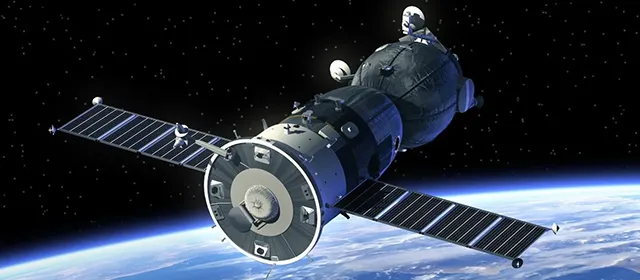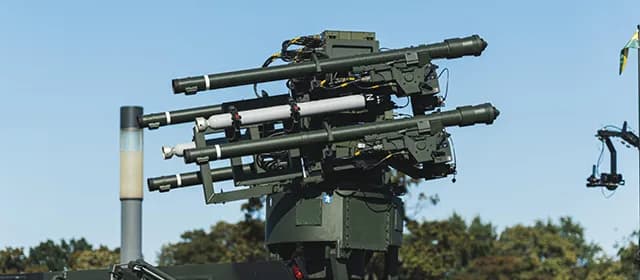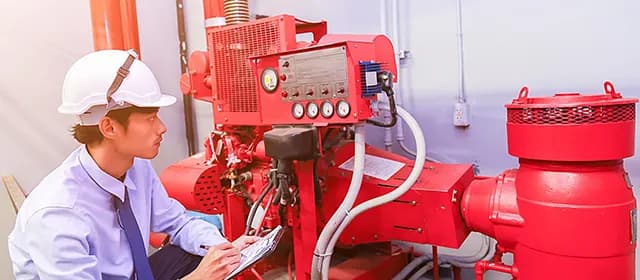In today’s rapidly evolving space ecosystem, the camera has become far more than just an imaging device; it is the cornerstone of modern exploration, observation, and defense. Space cameras now serve as critical instruments enabling precise Earth monitoring, planetary mapping, environmental forecasting, and intelligence gathering. For industries and governments alike, they provide the data backbone that fuels decision-making, innovation, and geopolitical advantage.
As space technology shifts from government monopoly to commercial collaboration, demand for advanced imaging systems is surging. Satellite constellations, planetary missions, and private launches are redefining what space cameras can achieve. According to reports by Kings Research, the space camera market worldwide is set to register a revenue of $6841.1 million by 2031. From high-resolution Earth imaging to deep-space exploration, the next decade promises a profound transformation driven by optics, sensors, and data analytics.
What Is Driving the Global Interest in Space Cameras?
The renewed enthusiasm around space cameras stems from several converging factors — miniaturization of satellites, technological breakthroughs in sensor design, and the strategic push for autonomy in space operations. In particular, the rising volume of satellite launches has reshaped the industry’s trajectory.
In 2018 alone, 328 small satellites were launched, representing 69% of all satellites that year (Source: https://www.congress.gov/). This surge illustrates how low-cost, high-capability small satellites are democratizing access to space. Between 2009 and 2014, the United States held an average 43% share of the global satellite industry (Source: https://cece.vt.edu/), highlighting its long-standing dominance in orbital deployment and imaging capabilities.
This dramatic growth in satellite activity underscores one clear reality — the more satellites orbiting Earth, the greater the demand for sophisticated space cameras capable of generating detailed, real-time imagery. For industrial players, this expansion represents not just a technological race but also an immense commercial opportunity.
Technological Innovations Redefining Space Imaging
Innovation in sensors is at the core of the space camera revolution. Despite their strength, traditional imaging systems suffered from radiation exposure, low light sensitivity, and limitations with data transfer. Many of these restrictions have been removed by developments in CMOS and CCD sensor technology, allowing for previously unheard-of clarity and durability in orbit.
Modern high full-well capacity CMOS sensors are being developed specifically for space applications, enhancing both image quality and operational efficiency. These sensors can handle extreme contrast conditions and capture minute details of planetary surfaces and atmospheric patterns. Beyond this, NASA’s ongoing development of single-photon sensing CMOS detectors represents a leap forward in imaging science. Such detectors are vital for missions aimed at detecting faint biological signatures or light sources in deep space, a technology that could one day help identify life beyond Earth.
These developments expand the capabilities of space cameras for producers and financiers. They are platforms for discovery as well as tools for observation, with the ability to provide adaptive optical correction in harsh conditions, 3D surface mapping, and high-precision data analytics.
Why Are Space Exploration Programs Expanding Demand for Imaging Systems?
Imaging systems are essential to every mission as governments throughout the world redouble their efforts to explore space. Space cameras help with mission safety and facilitate scientific discoveries, from mapping Mars to determining the composition of lunar soil.
According to the Brookings Institution, the global space economy is projected to grow from $630 billion in 2023 to $1.8 trillion by 2035 (Source: https://www.brookings.edu/). This threefold increase will be largely driven by satellite-enabled services such as communications, navigation, and Earth observation — all of which rely on imaging precision. In the U.S., the space economy expanded by 0.6% in 2023, while federal defense space programs grew by 12.7%, underscoring the continued strategic emphasis on space infrastructure (Source: https://apps.bea.gov/).
For industrialists, these figures signal expanding procurement needs for high-performance optical systems. Space agencies and defense departments require imaging equipment that can survive radiation exposure, withstand temperature fluctuations, and maintain calibration over years of continuous operation. This presents lucrative opportunities for component manufacturers, optics firms, and AI imaging software developers to collaborate with mission operators in both public and private sectors.
Commercialization of Space Reshaping the Imaging Ecosystem
The space sector is witnessing a profound transition, from government-driven exploration to private-sector-led innovation. The rise of commercial launch providers, satellite service companies, and imaging data platforms has redefined the economic logic of space operations.
NASA has played a pivotal role in accelerating this transformation through its public-private partnership programs, which encourage collaboration with emerging space firms to enhance microgravity activities, satellite servicing, and small interplanetary missions. The impact of such initiatives is tangible; in 2023, NASA’s economic activities generated more than $75.6 billion in output across all U.S. states and Washington, D.C. (Source: https://www.nasa.gov/).
A new category of imaging businesses has emerged as a result of the increase in private involvement. Compact, radiation-hardened cameras for CubeSats, deep-space probes, and orbiting drones are being developed by startups and aerospace innovators. Investors anticipate a growing market for data-as-a-service models, where imagery taken in orbit is monetized across a variety of industries, from agriculture and defense intelligence to mining exploration and climate monitoring. This is due to the convergence of private funding and technological advancement.
What Role Does Asia-Pacific Play in the Evolving Space Imaging Landscape?
The momentum in space imaging is no longer confined to the U.S. or Europe. The Asia-Pacific region has emerged as a major driver of innovation and growth in space technologies. Countries such as India, Japan, China, and South Korea are investing aggressively in new satellite and exploration programs, creating a competitive landscape that fuels rapid progress in imaging systems.
China’s establishment of the Strategic Support Force, which integrates space, cyber, and electronic warfare capabilities, underscores the strategic value of space dominance. Similarly, across the region, national space agencies and private players are expanding investment portfolios in satellite imaging, deep-space missions, and planetary observation.
For global manufacturers, this regional momentum represents a powerful opportunity for partnerships, supply chain expansion, and technology transfer. Asia’s growing appetite for high-resolution space cameras not only enhances regional security capabilities but also drives innovation through cross-border collaboration and competition.
How Are Space Cameras Powering the Data-Driven Economy?
Beyond just exploring space, it's what space cameras are capturing up there that really matters. Every single photo snapped from space is churning out a whole bunch of valuable data that's actually being put to good use in all sorts of areas - environmental monitoring, agriculture, disaster response, and town planning, to name just a few.
Take, for example, Earth imaging - it allows us to make predictions about things like forest fires, droughts, and cities getting too hot in the summer. For the mining and oil industries, hyperspectral imaging is helping them track down mineral deposits and see what's happening to the environment. As the technology improves and the AI gets smarter, space camera data is being mixed in with digital twin models of the planet, which lets scientists and business folks run simulations and try to forecast what might happen in various scenarios.
This convergence of optics, AI, and analytics transforms space cameras from passive instruments into active contributors to global intelligence systems. Businesses in telecommunications, insurance, logistics, and agriculture are increasingly relying on satellite-derived imagery for operational decisions, underscoring the strategic and commercial value of advanced imaging technologies.
What Technological Frontiers Lie Ahead for Space Cameras?
The future of space imaging is being shaped by innovations at both the hardware and software levels. The next generation of cameras will likely combine quantum imaging, AI-powered compression, and adaptive optics to enhance accuracy, reduce data latency, and improve image reconstruction.
Radiation-hardened materials, modular camera architectures, and edge computing capabilities will allow spacecraft to process images in real time, transmitting only essential data back to Earth. This will be especially critical for deep-space missions, where transmission bandwidth is limited.
Meanwhile, the growing synergy between machine learning algorithms and multispectral sensors will enable automated image interpretation, reducing human dependency in data analysis. For industrialists, these innovations signal opportunities to integrate imaging hardware with analytics platforms, offering value-added services in observation, reconnaissance, and exploration.
What Opportunities Exist for Businesses in the Space Camera Ecosystem?
For investors and manufacturers, the expanding space imaging sector presents multiple avenues for value creation. Component producers can explore partnerships with aerospace firms for customized optical assemblies. Sensor manufacturers can focus on radiation-resistant technologies and thermal control systems to enhance durability.
Software developers, on the other hand, can leverage space imagery to build AI analytics platforms for defense, meteorology, or environmental planning. Meanwhile, data service providers can monetize imagery through subscription-based access models, enabling industries to integrate space intelligence into their operations.
As the ecosystem matures, collaboration between government agencies, private companies, and research institutions will be key. Joint ventures and shared technology frameworks can reduce development costs, enhance reliability, and accelerate innovation cycles, ensuring that space cameras continue to play a pivotal role in the global data economy.
How Will Regulation and Sustainability Shape the Future of Space Cameras?
With increasing satellite deployments and data generation comes a growing responsibility to manage space assets sustainably. Governments are now setting clearer frameworks for orbital debris mitigation, data ownership, and commercial imaging rights.
As imaging technology becomes more powerful, ethical and security considerations also rise. The ability to capture high-resolution images from orbit introduces questions about privacy, surveillance, and environmental stewardship. For B2B stakeholders, compliance with regulatory standards and data protection laws will be crucial in maintaining trust and operational legitimacy in global markets.
In parallel, sustainable design principles, such as developing reusable optical payloads and energy-efficient imaging systems, are becoming central to long-term space strategies. Companies investing early in environmentally responsible imaging technologies are likely to gain both economic and reputational advantages.
Final Thoughts
The space camera industry stands at a transformative inflection point. What began as a tool for exploration has evolved into an indispensable instrument of science, security, and commerce. Technological innovations in sensors and optics, coupled with government investments and commercial expansion, are unlocking new horizons in how humanity observes and understands the universe. For industrialists, the implications are clear. Organizations that align with this imaging revolution will position themselves at the center of a data-driven space frontier.




